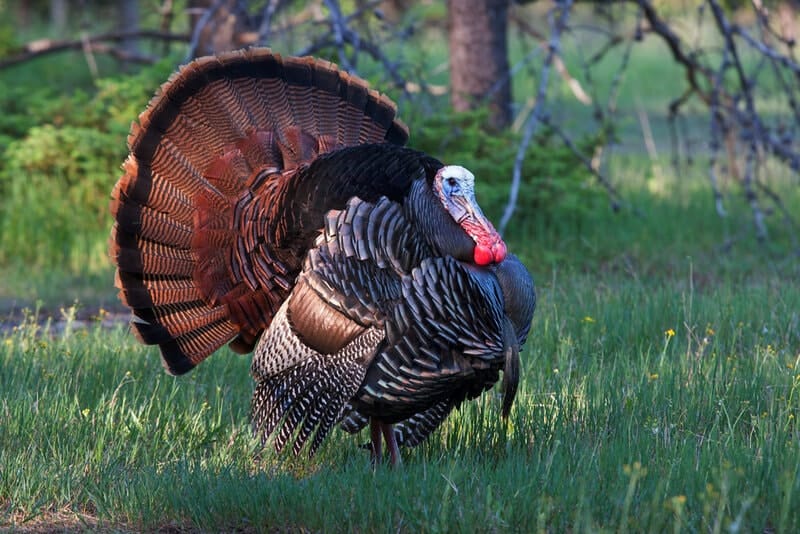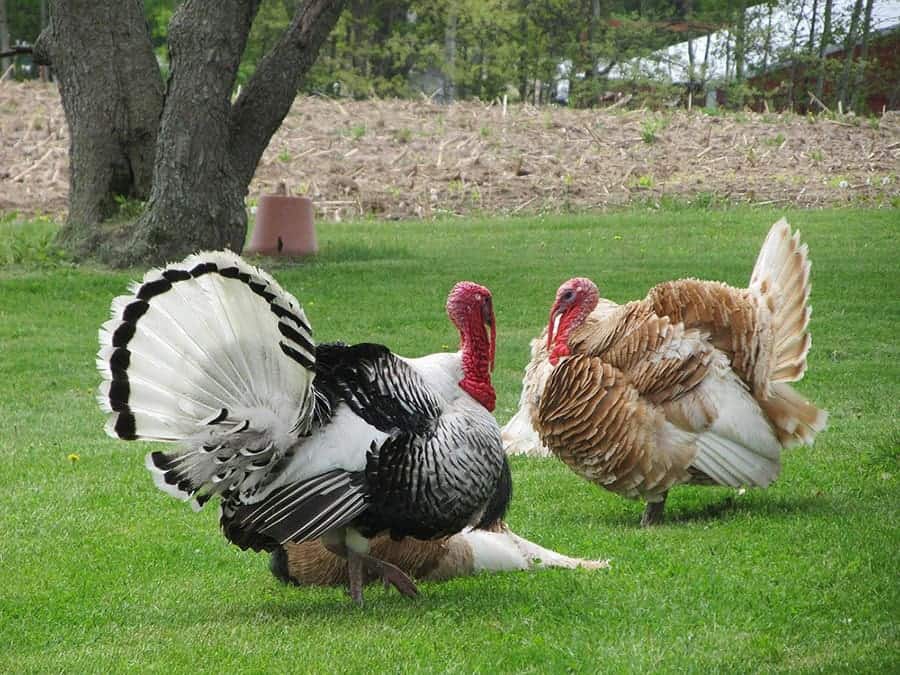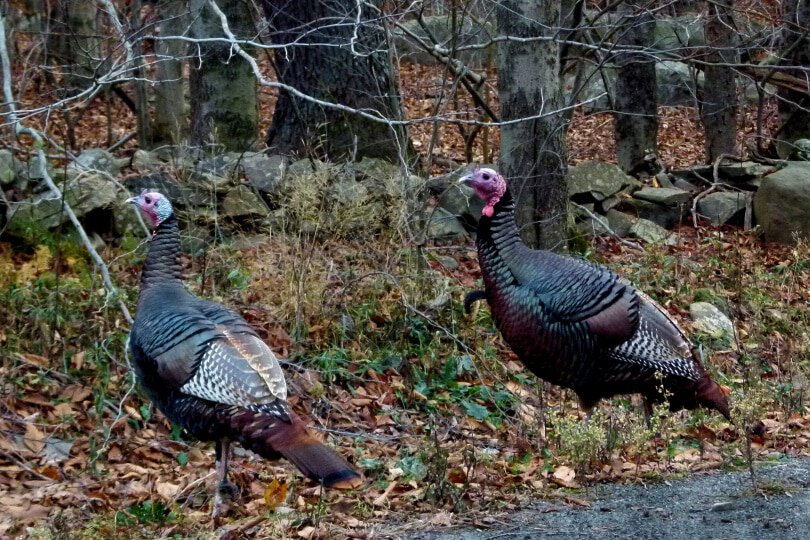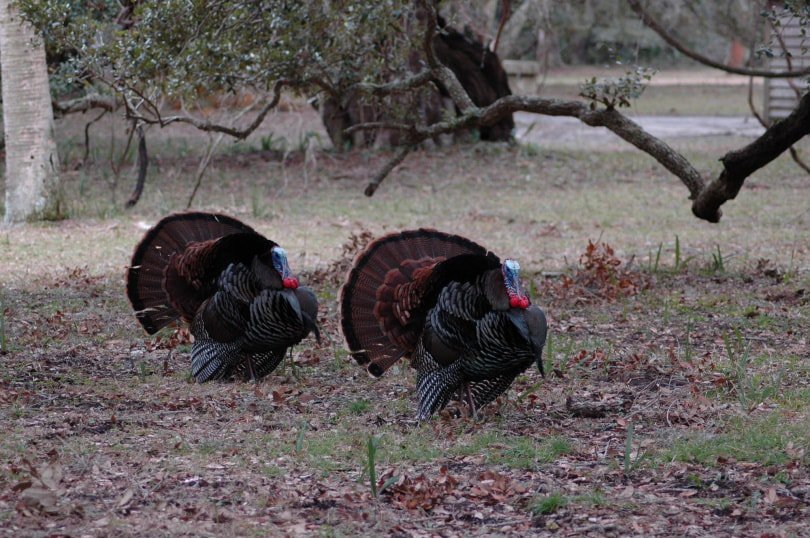Some stories don’t die. Instead, they get legs based on anecdotes, such as the account that your aunt’s best friend’s second cousin tells, swearing it was true. That’s the case with the myth that turkeys drown in the rain. Its origins have ties to misidentification and an unfortunate association that dogs all these birds mercilessly. Let’s set the record straight once and for all about this bird of courage and state that turkeys can’t drown in the rain.

The Myth About Drowning Turkeys
The myth about turkeys drowning in the rain has obscure origins. You must admit that the bird looks out with its bald head and the beard on males. That’s saying nothing about its tail and the silly sound it makes. All these things have contributed to the fact that many people view turkeys as dumb animals. Just entering the species in Thesaurus.com yields a plethora of avian insults, such as:
- Dimwit
- Buffon
- Clown
- Blockhead
Talk about an image problem!
The story goes that turkeys are so dumb that they don’t even know when to get out of the rain. Instead, they’ll look up and forget to close their beaks while their gullets fill with water to an inevitable demise. The myth even sounds ludicrous without drilling down the facts. It reminds us of the old husband’s tale that you can strangle an owl by walking circles around a tree in which it is perched.

Debunking With Anatomy
The very suggestion that a turkey would look up to the sky is fraught with misinformation. You have only to look at the bird’s head to understand why. Like many birds and other animals, turkeys have eyes on the sides of their heads. It gives a prey species a wider field of vision to help them live another day by escaping certain death.
On the other hand, predators, such as coyotes, owls, and foxes—including humans—have forward-facing eyes. That allows them to focus on their prey to improve their chances of hunting success. If a turkey were at all interested in the rain, it would cock its head so one eye could see what was happening above, yet keep its beak from collecting much rainwater.

Domestic vs. Wild Turkeys
We must also distinguish between wild and domesticated turkeys. The former is a species well-adapted to its ecological role. It has excellent eyesight—during the day. It can run up to 60 mph in a pinch. Wild Turkeys have managed to live well with humans. You’ll see them in the suburbs as likely as you are to find them in farm fields. They won’t back down to people, either, if confronted.
Contrast this bird with the domesticated one. The latter doesn’t have to worry about predators usually. They get enough food and water to fatten up without having to expend any excess energy. Domesticated turkeys don’t even have to worry about other birds penned up with them since their spurs and beaks are trimmed. It’s almost as if you’re dealing with two different species.

Tetanic Torticollar Spasms (TT)
This distinction comes into play when we consider something that may have fueled the myths and stories about drowning turkeys. Tetanic torticollar spasms (TT) describe a neurological disorder observed in domesticated birds. Animals with this condition may cock their heads upward in what looks like a turkey, fascinated with the rain falling on it. They can last up to one minute.
Someone unfamiliar with this disorder may assume that the turkey is acting, well, like a turkey and not taking the precautions to protect itself from drowning. That could explain the anecdotes you may hear about this bizarre myth. Bear in mind we’re talking about domesticated turkeys and not wild ones. That side of the coin tells a different story.
The Role of Habitat
Wild Turkeys live in a wide range of habitats, tending to prefer forests. However, you’ll also see them in places where it may rain a lot, such as marshlands. Logic tells us that if it were a matter of “dumb turkeys,” they wouldn’t live in these habitats or any other place where it rained a lot. That’s certainly not the case with Florida Wild Turkeys that inhabit swamps.
However, that also takes us to another stark difference between wild and domesticated birds.

Roosting in the Trees
Wild Turkeys roost in trees out of necessity. It’s their defense against predators. Remember that wild birds can fly for short bursts, whereas domesticated ones cannot. That fact also comes into play when you consider the effect of the season on this behavior.
During the winter months, Wild Turkeys will seek conifer trees for cover when deciduous ones are bare. That suggests some intelligence about the weather.

Final Thoughts
The myth about turkeys drowning in the rain is just that, a story with no basis. It doesn’t make sense on so many levels, starting with the anatomy of the bird. It’s essential to keep evolution at the forefront of these discussions. If a behavior didn’t support survival, any animals displaying it would die out within a few generations. After all, none would live to pass on this useless trait.
Featured Image Credit: Piqsels
